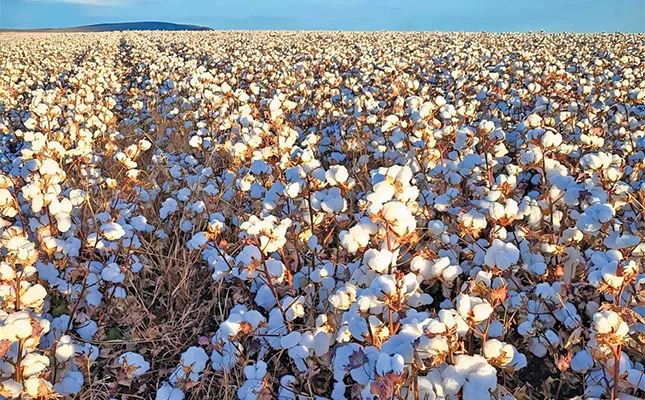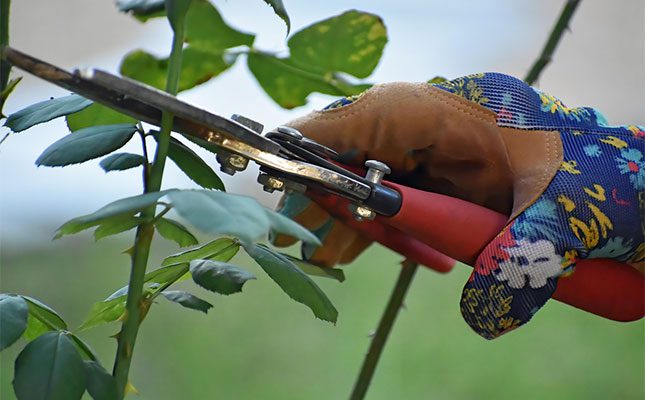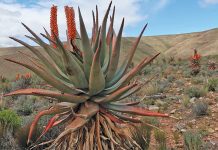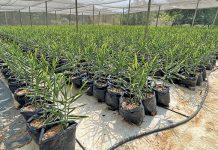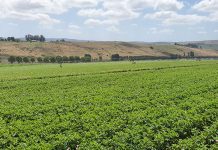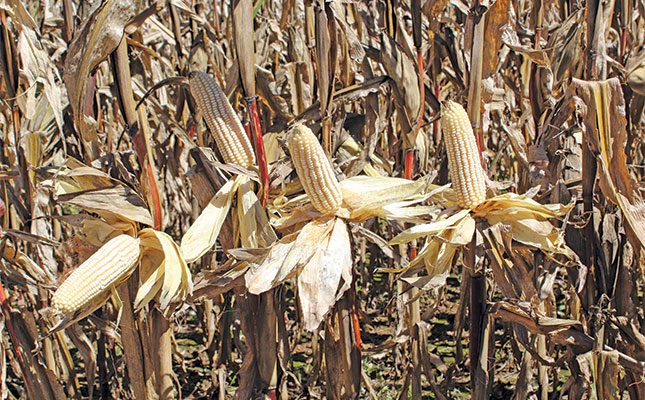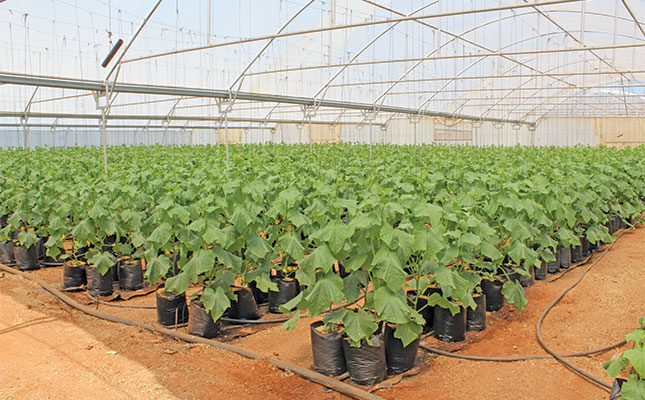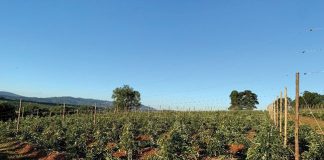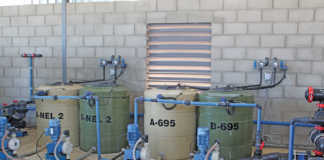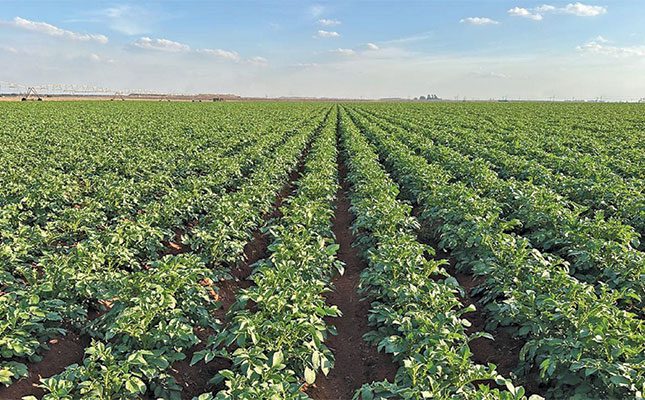
Photo: Lindi Botha
Three years ago, Franelyn Rossouw, owner of Gro Africa Farming in Delmas, Mpumalanga, found herself at a crossroads. Her husband had committed suicide, and she could either sell the farm, or step out of her role as a farmer’s wife and become the farmer herself.
With bills to pay and a household to support, she chose to take up the reins of the grain and potato farm.
“It was scary in the beginning. Although I farmed alongside my husband, I didn’t have the detailed knowledge of how to produce potatoes. So, I sought out the right advice, appointed the right people, and cut back production to minimise risk during this learning curve,” explains Rossouw.
The journey has been littered with challenges, but has not been without success. Last year, she was named the Bayer Female Farmer of the Year in recognition of her diligent stewardship.
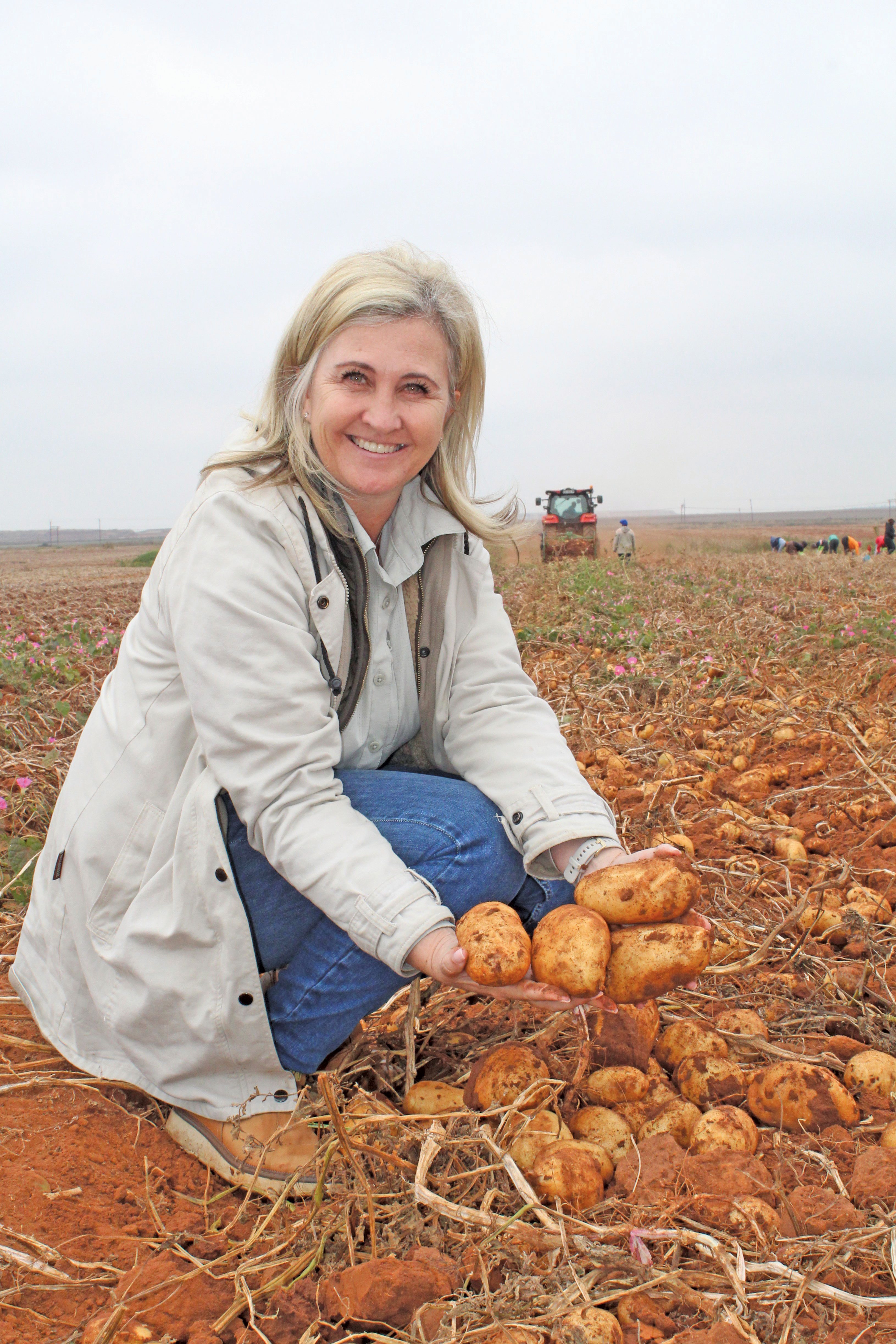
Having the courage to step back and reduce production has been a key decision to stabilise the operation. In the first year after Rossouw took over, she continued planting the 80ha of potatoes the farm had been producing.
But with load-shedding becoming an increasingly frequent reality, she had to find a way forward that would minimise the risk of the haphazard irrigation schedule that resulted from a lack of electricity. Production was halved, planting only 50% of two centre pivot fields.
While the farm initially had contracts with two food companies who bought their potatoes – Simba and Nature’s Garden – by the second year, Rossouw chose to continue only with Nature’s Garden.
“Simba requires that the potatoes are washed before being sent. This requires extra water and labour, and pushes up costs. It wasn’t worth it,” she explains.
Some 20ha are now planted to Marquis potatoes, which are suited to Nature’s Garden’s frozen chips production, and the other 20ha are planted with the Mondial variety to service the fresh produce market.
Accurate planting
The farm is fortunate to have fertile Hutton soils as the predominant soil type. But Rossouw notes that since the farm also has spots where soils are poorer, it is important to plant potatoes only in the best parts, since it is a high-value crop.
Due to disease pressure that can build up in the soil, the fields are rotated. In the year after potatoes, maize is cultivated, followed by soya bean in the third year. In the fourth year, potatoes will be planted once more. Planting traditionally takes place in September, with the harvest following in January.
Soil preparation includes ripping the soil to loosen it. The ground must also be levelled. The soil is fumigated to eliminate soil-borne pests like eelworm and nematodes. A herbicide is used to remove nutsedge, a particularly troublesome weed for potato farmers.
Soil analysis is done to determine which nutrients need to be applied and in what quantities. Lime is generally applied first, followed by 2N:3P:4K granular fertiliser at a rate of 500kg/ha just before the seed is planted.
Seed quality and readiness are important factors for a successful harvest. Rossouw laments that she has learnt costly lessons in this regard.
“The potato seed can only be planted once it has sprouted. At one stage I got fresh seed and it just wasn’t sprouting. Eventually we placed it in the sun during the day in the hope that the heat would encourage it to sprout. We closed it with tarp at night. This worked, but it delayed planting,” she explains.
She notes that care must be taken during the planting process to attain the right stand and ensure that the amount of seed allocated to a field will actually cover it.
A four-row Grimme planter is used. Rossouw says that although the mechanical process is faster than manual planting, it cannot be rushed.
“The slower you plant, the better – it ensures that spacing and depth is correct.”
Tertius Kruger, farm manager at Gro Africa Farming, explains that stand and planting depth are determined by seed size.
“We plant three to four seed potatoes per metre, at a depth of 180mm. It is important to go through the rows and open the furrows here and there to check that the planter has actually planted the seed at the required rate. If it isn’t right, you need to adjust the planter or you won’t get the required stand.
“The seed also tends to roll when it hits the ground, so it’s unlikely that you’ll ever achieve exact spacing, but the overall seed planted per hectare must be accurate, with no doubles per hole, otherwise you could run out seed before the field is filled,” he explains.
Granular fertiliser is applied at planting, and thereafter on a fixed weekly schedule. The fertiliser programme is formulated based on the desired yield and the cultivar’s specific requirements. The only liquid fertiliser used is a monoammonium phosphate application when emergence is at 80%, to boost the plants. This is applied using a Jacto sprayer.
Kruger explains why they prefer granular fertiliser over liquid: “Liquid fertiliser needs to be put through the centre pivot irrigation system, but the chemicals eat away at the pipes. If the electricity suddenly goes off because of load-shedding, and fertigation is underway, the chemicals lie in the pipes for too long and damage it. The other issue is that when the power comes back, the start-ups of the pump and the pivot aren’t necessarily in sync, so you get a whole lot of fertiliser dumped in one spot. Not only is this a waste, but it burns the plant and reduces yield, too.”
He believes that a good yield is dependent on three key factors: correct water management, timely application of fertiliser, and an effective crop protection programme.
“During periods when there is no rain, the centre pivot must never stand still. We can’t take a chance and pause irrigation, because we need to apply 55mm/ha/week. This can be challenging when you take into account the need to pause for fertiliser and crop protection applications. This is why load-shedding is so devastating,” he says.
Another challenge is that the irrigation pumps and the centre pivots run on different Eskom lines. When there is load-shedding, the one might be off and the other on.
If the pump is running but the pivot isn’t, the water is dumped in one area, which causes water stress.
“Where there is a saturated spot, it will stay that way until the day you harvest the potatoes. It never gets a chance to dry up. When we look at satellite images of the fields, we can see how the plant growth is subdued in the wet spots, and the yields are lower,” explains Rossouw.
Rather than relying on moisture probes, Kruger checks the soil manually daily to assess water requirements.
“Moisture levels can differ based on soil type and slope, so results from probes can be misleading. We do place rain meters on the centre pivots to measure how much water is actually applied. Being physically present in the fields is important to get a real sense of how the crop is doing,” he says.
Kruger and Rossouw emphasise the difficulty of producing potatoes when so many factors for success are out of their hands.
“Nature can turn on you very quickly. On days when it’s overcast, the fungal pressure increases and we need to get into the fields to guard against diseases like rust. If the plant undergoes stress at any point, it affects the yield because it will stop pushing energy into the current tubers, and start producing new ones. This leads to a crop with predominantly small potatoes. In this regard, heatwaves, hail, not enough water at critical times, or a lack of sunshine can be problematic,” says Kruger.
Rossouw adds that no two seasons are the same, making the learning curve for potato production even steeper.
“Two years ago, we had a drought. For the past two years, it’s been too wet. Last year we had three hailstorms. Planting potatoes is a gamble, which is why you really need to focus on managing the plants to the best of your ability, with the tools at your disposal,” she says.
Helpful technology
A key issue for any crop is soil compaction. In the case of potatoes, this can be particularly problematic since compaction also results in higher disease risk. Tractors driving in the fields cause compaction, with water collecting in the tracks unable to seep into the soil. Eelworms are prone to breed in these pools.
Another issue caused by frequent traffic in the fields is that the soil on the ridges in which the potatoes are planted is disturbed, often leading to the potatoes being exposed to the sun. This turns them green and unmarketable.
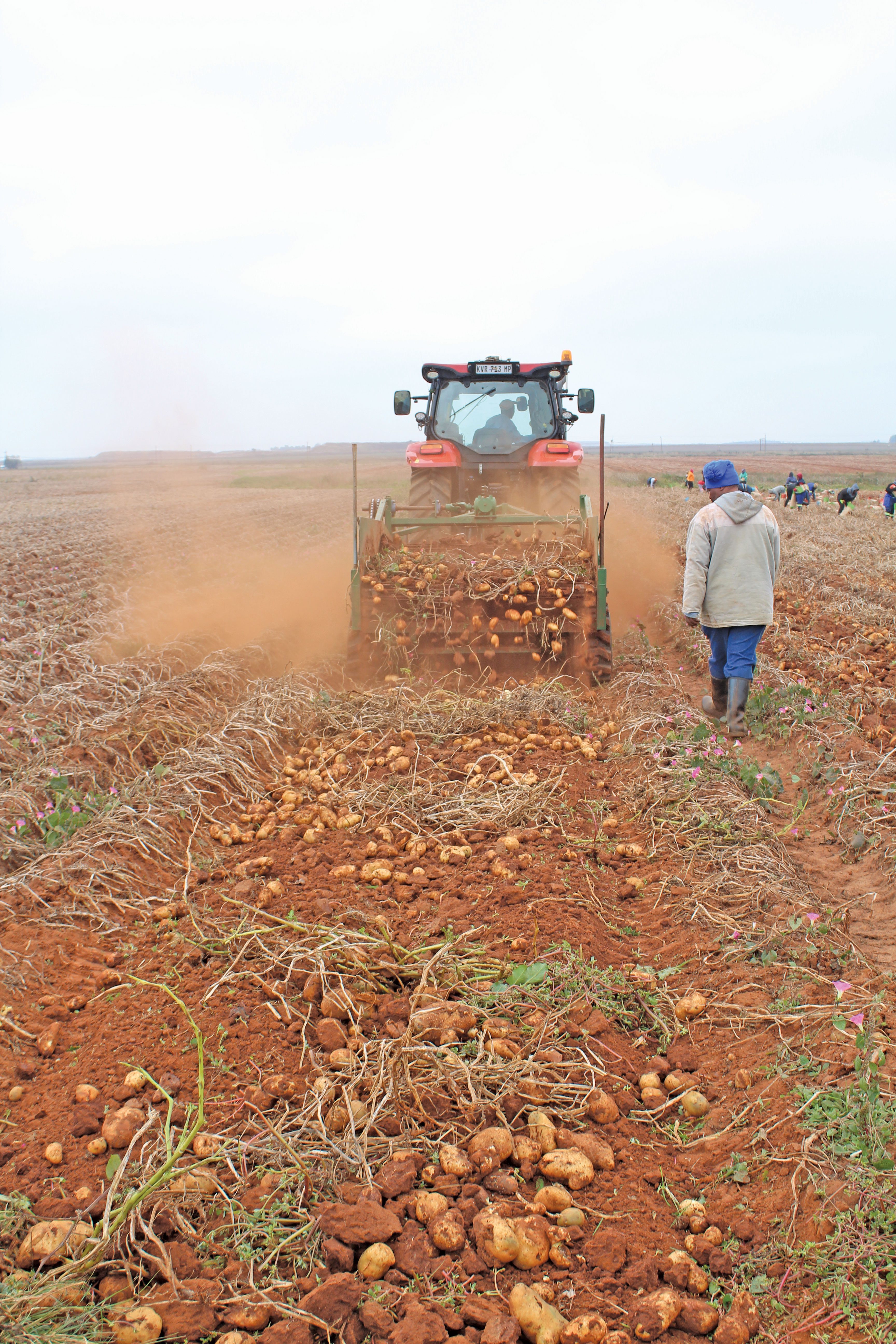
Once the ridges start bulking up with potatoes, crop protection applications switch from the Jacto sprayer to aerial spraying.
“We have to get through the field at least twice a week – that is a lot of traffic. If we can take even half of our applications to the sky, it is already a massive benefit,” says Kruger.
The aerial applications are also helpful when the fields are too rain-saturated and tractors can’t get into the fields. Rossouw initially did these aerial applications using an aeroplane. The next year, a helicopter was used, and the past season saw the introduction of drones.
Kruger explains that a helicopter is more effective than an aeroplane in getting the product into the field since it can fly lower.
“The wind generated by the helicopter’s propeller opens up the plant and the chemical can be deposited in between the leaves and onto the stem, rather than just the canopy.
“We switched to drones, because they can fly even lower than a helicopter, opening the plant even more to deposit the chemical where it needs to be. Drones can be used at night, when there is generally less wind, so the efficacy is greater.
“The drone system is still being trialled on the farm, but so far it seems to be the best option.”
Kruger notes that helicopter applications are expensive since the helicopter usually has to fly in from far. Drone applications are cheaper as there are contractors who are closer. However, drone operators are becoming increasingly difficult to pin down, since their popularity makes it difficult to find an opening in their schedule. Acquiring their own drone is an option Rossouw is considering for the future.
Pest control
Pests plaguing potato crops are predominantly Tuta absoluta (tomato leafminer), tuber moths, eelworms and nematodes. T.absoluta was found on the farm for the first time last year. This devastating pest requires maximum attention to prevent it from damaging the potato crop.
“If the insect pressure increases, you need to increase the frequency of pesticide applications,” says Kruger.
Adding pressure to farmers in this regard is a zero-tolerance policy for pest damage imposed by food companies who buy the potatoes.
“Last year they rejected a whole load from a farmer because some potatoes had insect damage, so we are very careful,” says Rossouw.
However, she says that a zero-tolerance policy isn’t practical when one is farming on a large scale and at such a high density.
“The public wants their food to be organic, but it’s impossible to keep insects out of a field that is so densely planted. Yes, softer chemicals can be used, but you need to be very sure it works and will give you full protection. We take the full risk on our shoulders.
“If we reduce pesticide applications and our loads are rejected, how will we pay salaries and bills? We are getting so much pressure to produce healthier food, but there is no safety net for farmers. We carry all the risk alone,” she explains.
For this reason, she is hesitant to use biological crop protection to fight pests. “We might consider it in future, but I would need to be 100% certain that the crop won’t get any pest damage. If it is not economically feasible, then it is not worth the risk,” she adds.
Traps are placed in the field to measure insect pressure, and then guide pesticide applications. Kruger notes, however, that walking through the fields frequently is important.
“When you walk past the plants, any moths present will fly up. While we follow a calendar spray, sticking to a fixed programme to ensure maximum pest control, the monitoring systems guide me as to whether applications should be increased if insect pressure is too high,” he says.
Troublesome returns
Rossouw uses a combination of manual labour and mechanisation to harvest the potatoes. While the process can be fully mechanised, she is mindful of the need to create jobs for the local community.
“We can give jobs to up to 100 people during harvest, but managing labour is very challenging. So, we have opted for a compromise between mechanisation and manual labour, and use around 70 people to harvest,” she says.
A Spaldings potato lifter is used to harvest the potatoes. For the frozen market, the potatoes are placed in 33t bins in the field and then transported to Nature’s Garden.
The potatoes destined for the fresh produce market are packed in 10kg pockets in the field, and then sent to the packhouse to be palleted. Rossouw notes that while this is a primitive process, it is part of the strategy to get back to basics after her husband passed away.
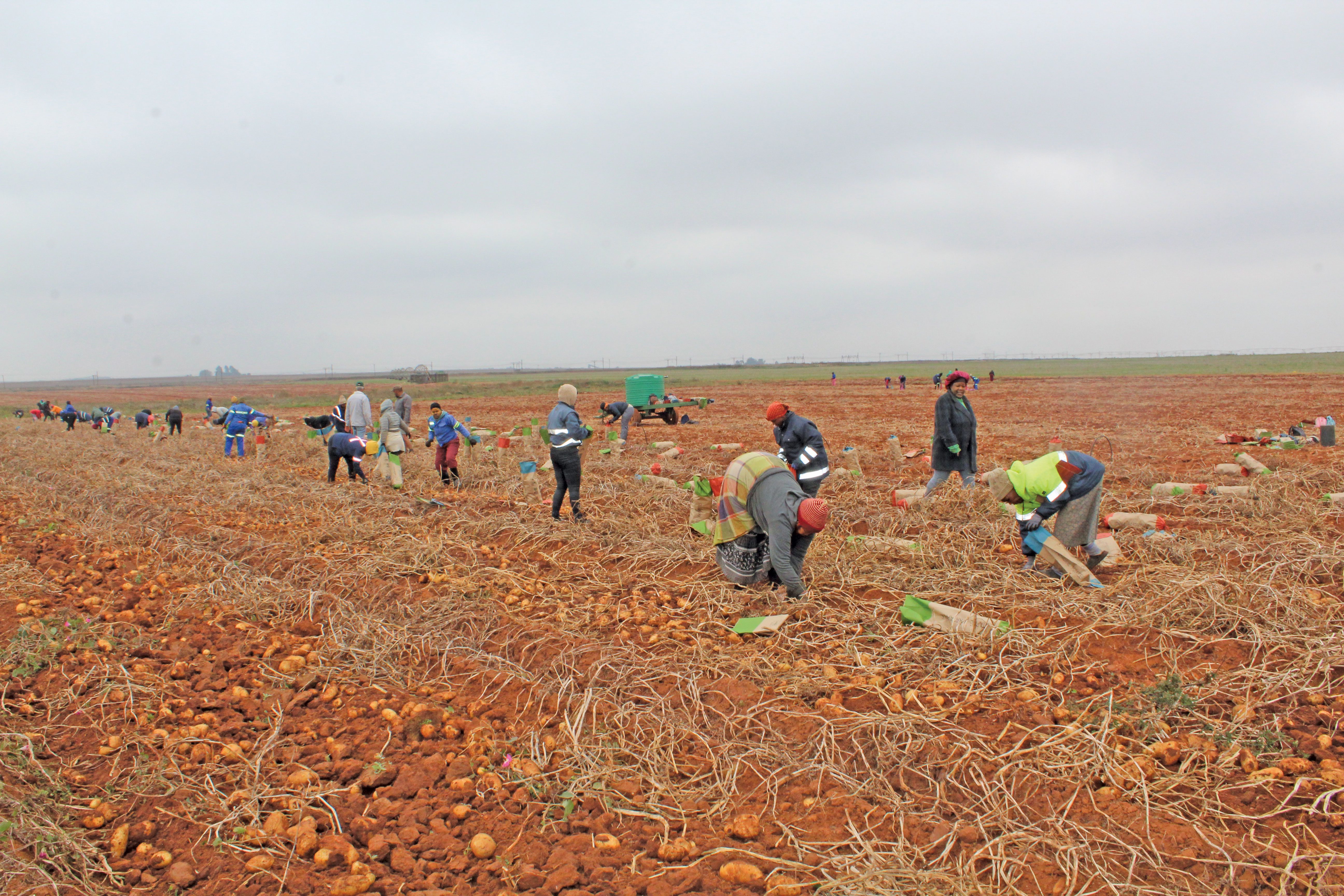
Expanding production in future is not a given. “It depends entirely if the price we receive for the potatoes is worth it. The buyers must look after the farmers. We can’t produce food if we can’t make a living,” explains Rossouw.
She adds that although having a contract in place with a buyer might seem like an option that provides more security, it is of little comfort when the price offered is too low.
“Then we are just shuffling money between the buyer and our input suppliers and labour. When the contract is signed, there must be agreement that the price will be worthwhile. Everything is increasing – inputs, labour costs, technology costs. But the prices remain low.
“If the prices are good and your yield is average, then you can still make it. But there is so much that can go wrong with a potato crop, and if your yield drops and the prices are low, you won’t make it. The buyers don’t understand the risks we take to produce potatoes. I don’t think we are rewarded at a rate that is feasible.”
Rossouw notes that the past three years have brought expensive lessons, but any issues can be rectified the next season.
“After every season we assess what worked and what didn’t. Farming is tough, but I want to encourage farmers to get passionate about it, because there is a blessing in it, too,” she adds.
For more information email Franelyn Rossouw at [email protected].

